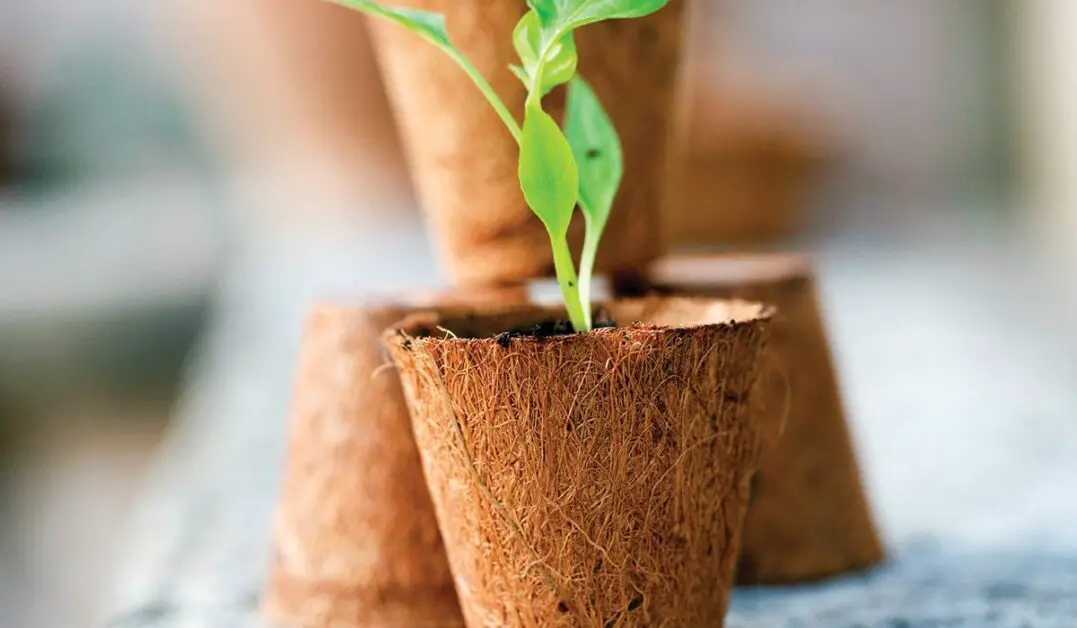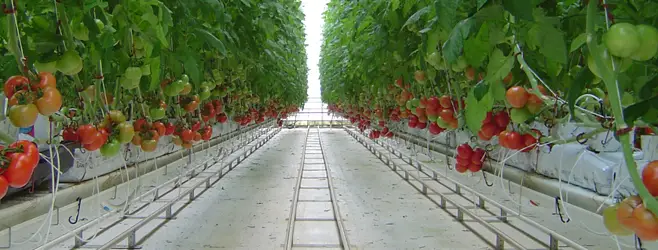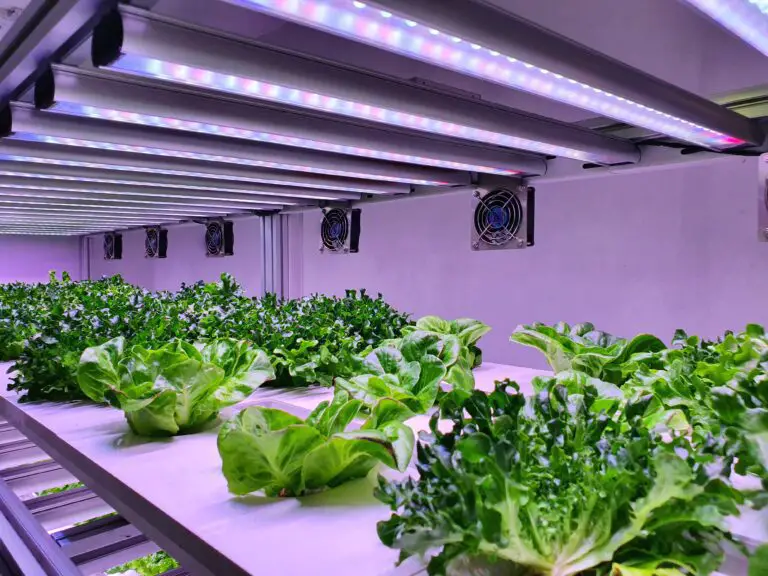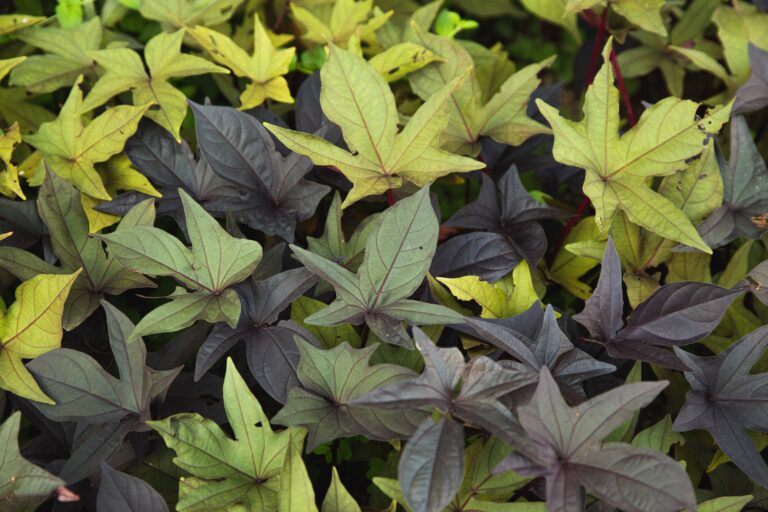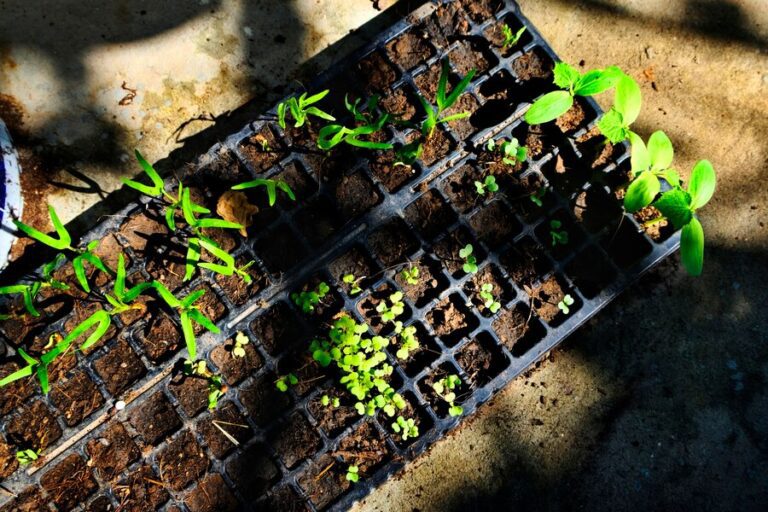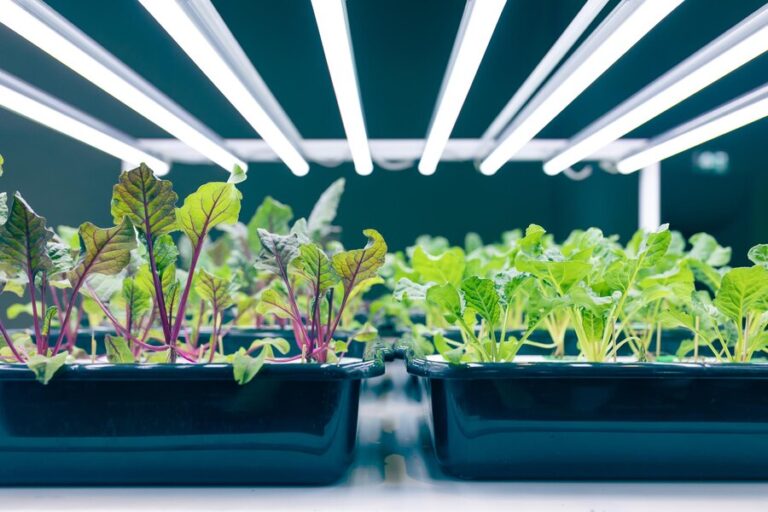Propagating Seedlings with Coco Coir in Hydroponics
The Benefits of Using Coco Coir in Hydroponics
Coco coir, derived from the fibrous outer husk of coconuts, has gained immense popularity in hydroponic gardening due to its numerous benefits. One of the key advantages of using coco coir in hydroponics is its exceptional water retention capacity. Unlike traditional growing media such as soil, coco coir retains moisture while still providing adequate aeration for the roots, ensuring optimal hydration for plants. This is particularly advantageous in hydroponics, where precise control over moisture levels is crucial for plant growth and nutrient uptake.
Another benefit of coco coir in hydroponics is its excellent nutrient retention capabilities. Coco coir has a high cation exchange capacity (CEC), meaning it can hold and release nutrients efficiently. This allows for better nutrient absorption by plants, resulting in enhanced growth and yields. Additionally, coco coir has a neutral pH, which can be easily adjusted to suit the specific requirements of different crops. This versatility makes coco coir an ideal growing medium for a wide range of plants, giving gardeners the flexibility to cultivate various fruits, vegetables, herbs, and flowers in their hydroponic systems.
As we delve deeper into the benefits of using coco coir in hydroponics, it becomes apparent why this growing medium has captured the attention of gardening enthusiasts. Its water retention properties and nutrient capacity make it a valuable asset in the pursuit of healthy and thriving plants. With these advantages in mind, it is essential to explore the different applications and techniques for utilizing coco coir effectively in seedling propagation, transplanting, and maintaining optimal conditions for plant growth.
• Coco coir has exceptional water retention capacity, ensuring optimal hydration for plants in hydroponics.
• It provides adequate aeration for the roots while retaining moisture, unlike traditional growing media like soil.
• Coco coir has excellent nutrient retention capabilities due to its high cation exchange capacity (CEC).
• Its ability to hold and release nutrients efficiently enhances plant growth and yields.
• The neutral pH of coco coir can be easily adjusted to meet the specific requirements of different crops.
• This versatility makes coco coir an ideal growing medium for a wide range of plants in hydroponic systems.
Choosing the Right Coco Coir for Seedling Propagation
When it comes to seedling propagation in hydroponics, choosing the right coco coir is essential for ensuring successful plant growth. Coco coir, derived from the fibrous husk of coconuts, has become a popular growing medium due to its excellent moisture retention, aeration properties, and sustainability. However, not all coco coir products are created equal, and selecting the appropriate type for your seedlings is crucial.
Firstly, consider the coco coir’s fiber content. Coir with a higher fiber content provides better drainage and aeration, allowing oxygen to reach the root zone and preventing waterlogged conditions that can lead to root rot. On the other hand, coir with a higher peat content retains more moisture, which can be advantageous for plants requiring higher humidity levels. Understanding the specific needs of your seedlings will help you determine the ideal fiber-to-peat ratio for optimal growth.
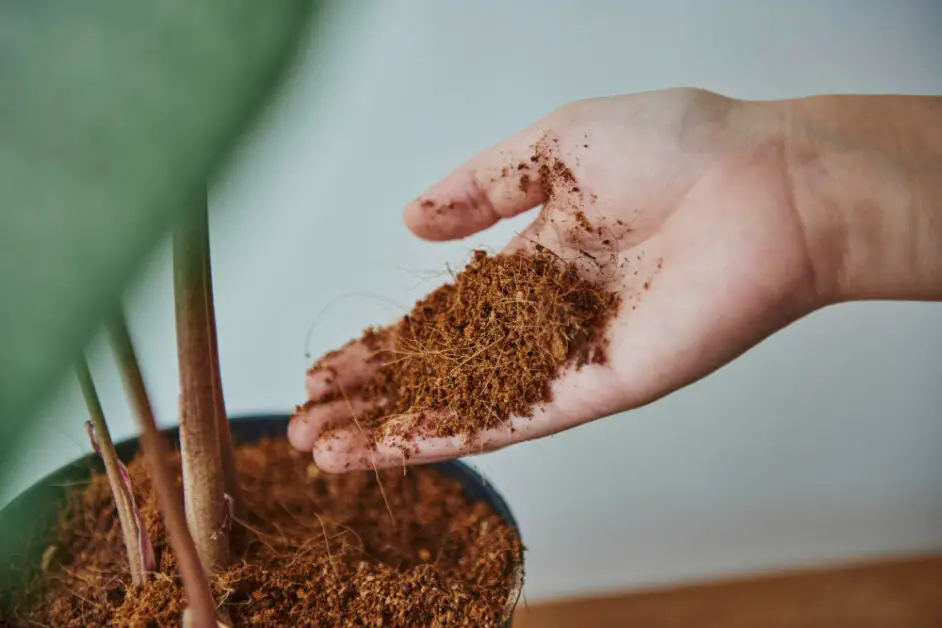
Another factor to consider is the coco coir’s pH level. Coco coir typically has a naturally slightly acidic pH, but the exact pH can differ between products. It is important to choose coco coir with a pH in the range of 5.5 to 6.5, as this provides an ideal environment for most seedlings. Avoid coco coir with excessively high or low pH levels, as it may require additional adjustments and can negatively impact plant health.
In conclusion, selecting the right coco coir for seedling propagation is a critical step in ensuring successful hydroponic growth. Considering factors such as fiber content and pH level will help you choose a coco coir product that aligns with the specific needs of your seedlings. By starting with the right growing medium, you set your seedlings up for strong, healthy development in their early stages.
• Coir with a higher fiber content provides better drainage and aeration
• Coir with a higher peat content retains more moisture
• Understanding the specific needs of your seedlings will help determine the ideal fiber-to-peat ratio for optimal growth
• Choose coco coir with a pH in the range of 5.5 to 6.5 for an ideal environment for most seedlings
• Avoid coco coir with excessively high or low pH levels, as it may require additional adjustments and can negatively impact plant health
Preparing Coco Coir for Seedling Propagation
Preparing Coco Coir for Seedling Propagation
Before beginning the process of seedling propagation with coco coir, it is essential to properly prepare the growing medium. Coco coir, derived from the fibrous husks of coconuts, offers several advantages for seedling growth, such as excellent water retention and aeration properties. To maximize its benefits and ensure successful propagation, here are some crucial steps to follow:
1. Hydrating the coco coir: Coco coir typically comes in a dehydrated form, so it needs to be properly hydrated before use. Place the desired amount of coco coir in a container and add water. Gradually add water until the coir absorbs it, expanding and becoming moist. Ensure that the moisture level is optimal, as excessive saturation can hinder seedling development.
2. Testing pH levels: Coco coir has a natural pH range of 5.5 to 6.5, which is considered ideal for most plants. However, it is recommended to check the pH level before planting the seeds. Use a pH testing kit to measure the acidity or alkalinity of the coir. If necessary, adjust the pH by adding suitable additives, such as dolomite lime or sulfur, to bring it within the desired range.
By following these steps, you can ensure that your coco coir is adequately prepared to provide the optimal growing conditions for seedling propagation. This initial preparation is crucial for setting a firm foundation for healthy and thriving seedling growth.
– Hydrating the coco coir:
– Place desired amount of coco coir in a container
– Gradually add water until the coir absorbs it, expanding and becoming moist
– Ensure optimal moisture level, avoiding excessive saturation
– Testing pH levels:
– Coco coir has natural pH range of 5.5 to 6.5
– Use pH testing kit to measure acidity or alkalinity
– Adjust pH if necessary by adding suitable additives like dolomite lime or sulfur
By following these steps, you can ensure that your coco coir is adequately prepared to provide the optimal growing conditions for seedling propagation. This initial preparation is crucial for setting a firm foundation for healthy and thriving seedling growth.
Selecting the Ideal Containers for Coco Coir Seedling Propagation
When selecting containers for coco coir seedling propagation, it is important to consider a few key factors. First and foremost, the container should have adequate drainage to prevent waterlogging, which can lead to root rot and other plant health issues. Additionally, the container should be the appropriate size for the specific plant being propagated, allowing enough room for root development without excessive space that can lead to over-watering.
Another crucial consideration is the material of the container. While plastic containers are commonly used due to their affordability and durability, they can retain heat, potentially causing roots to overheat in warm climates. In contrast, clay or terracotta pots offer natural breathability, allowing for better air circulation and moisture regulation. This can be particularly beneficial for young seedlings, promoting healthy growth and reducing the risk of over-watering.
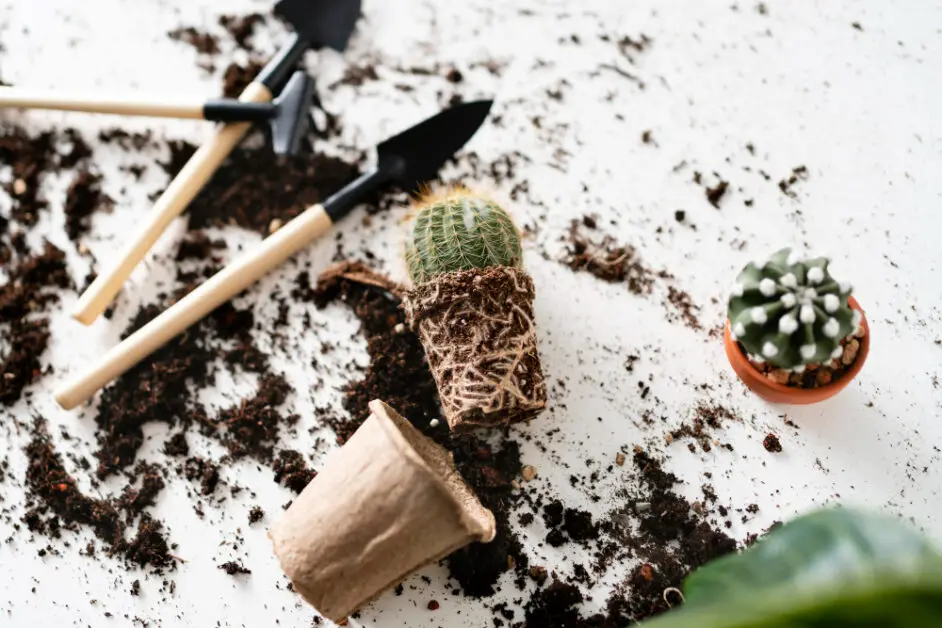
Overall, selecting the ideal containers for coco coir seedling propagation requires careful consideration of drainage, size, and material. By choosing containers that prioritize proper moisture control, air circulation, and root development, gardeners can provide optimal conditions for seedling growth and set the foundation for successful hydroponic gardening.
• The container should have adequate drainage to prevent waterlogging and root rot.
• The size of the container should be appropriate for the specific plant being propagated.
• Plastic containers are affordable and durable, but they can retain heat in warm climates.
• Clay or terracotta pots offer natural breathability, promoting air circulation and moisture regulation.
• Proper moisture control, air circulation, and root development are essential for successful seedling growth.
Sterilizing Coco Coir for Disease Prevention
To ensure healthy seedling growth in coco coir, sterilizing the growing medium is crucial for disease prevention. Coco coir is a natural and environmentally friendly substrate, but it can still harbor harmful pathogens that can impede plant health. By sterilizing coco coir before using it for seedling propagation, you can significantly reduce the risk of plant diseases and promote optimal growth.
There are several methods you can employ to sterilize coco coir effectively. One approach is to steam the coco coir, which exposes the substrate to high temperatures that kill potential pathogens. This can be done using a sterilization chamber or even a simple pot with a tight-fitting lid. Another method is to bake the coco coir in an oven, ensuring that it reaches a temperature of at least 180°F (82°C) for 30 minutes. This heat treatment effectively eliminates most disease-causing organisms.
By taking the necessary steps to sterilize coco coir, you create a clean and disease-free environment for your seedlings to thrive. This proactive measure not only prevents the spread of diseases but also sets the foundation for healthy and robust plants. Remember to prioritize sterilization as an essential step in your coco coir seedling propagation process to ensure the best possible outcomes for your hydroponic garden.
• Steaming the coco coir is an effective method for sterilization.
• This can be done using a sterilization chamber or a pot with a tight-fitting lid.
• Baking the coco coir in an oven at 180°F (82°C) for 30 minutes is another viable option.
• Both methods ensure that harmful pathogens are killed, reducing the risk of plant diseases.
• Sterilizing coco coir creates a clean and disease-free environment for seedlings to grow.
• It sets the foundation for healthy and robust plants in your hydroponic garden.
• Prioritizing sterilization as an essential step in seedling propagation process ensures optimal growth outcomes.
Soaking Coco Coir for Proper Moisture Levels
Soaking coco coir is a crucial step in achieving proper moisture levels for seedling propagation. Coco coir, being an organic medium derived from coconut husks, has a natural tendency to absorb and retain moisture, making it an excellent choice for growing plants hydroponically. By soaking the coco coir before use, it ensures that the medium is adequately hydrated, promoting optimal conditions for seed germination and early plant growth.
To soak coco coir, begin by placing the compressed coco coir bricks or blocks into a container large enough to accommodate the expansion. Add water to the container, ensuring that the coco coir is fully submerged. Allow the coco coir to soak for at least 30 minutes, or until it has fully absorbed water and expanded. Gently stir the mixture occasionally to ensure even hydration throughout the medium. Once the coco coir has expanded and absorbed all the required water, it is ready for use in seedling propagation.
Soaking the coco coir provides a few key benefits. Firstly, it helps to create a moist environment that is crucial for seed germination. The moisture in the coco coir allows the seeds to imbibe water and initiate the germination process. Secondly, properly soaked coco coir provides a stable and consistent moisture level, essential for establishing healthy plant roots. The hydrated coir retains moisture well, providing plants with a continuous water supply that reduces the risk of underwatering or overwatering. Additionally, soaked coco coir offers a favorable balance of air and water, ensuring oxygen availability to plant roots and preventing waterlogged conditions that could lead to root rot. By properly soaking the coco coir, gardeners can set the stage for successful seedling propagation and foster healthy plant growth.
• Soaking coco coir is crucial for achieving proper moisture levels in seedling propagation.
• Coco coir has a natural tendency to absorb and retain moisture, making it an excellent choice for hydroponic growing.
• To soak coco coir, place compressed bricks or blocks into a container large enough for expansion.
• Add water to fully submerge the coco coir and allow it to soak for at least 30 minutes.
• Gently stir occasionally to ensure even hydration throughout the medium.
• Soaked coco coir creates a moist environment essential for seed germination.
• Properly soaked coco coir provides stable and consistent moisture levels important for healthy plant roots.
• Hydrated coir retains moisture well, reducing the risk of underwatering or overwatering plants.
• Soaked coco coir offers a balanced ratio of air and water, ensuring oxygen availability to plant roots while preventing root rot.
By following these steps and properly soaking the coco coir, gardeners can create optimal conditions for successful seedling propagation and promote healthy plant growth.
Planting Seeds in Coco Coir: Step-by-Step Guide
Planting seeds in coco coir is a simple and effective way to start your hydroponic journey. Follow this step-by-step guide to ensure successful seedling propagation.
1. Select your seeds: Choose high-quality seeds from reputable sources. Consider the variety, growth characteristics, and desired outcome before making your selection.
2. Prepare the coco coir: Moisten the coco coir by adding water gradually until it reaches a consistently damp and crumbly texture. Avoid over-soaking to prevent waterlogging and subsequent issues with seed germination.
3. Fill the containers: Use containers specifically designed for seedling propagation, such as seed trays or small pots. Fill them with the dampened coco coir, ensuring they are evenly packed but not compacted.
4. Plant the seeds: Follow the packet instructions for seed depth and spacing. Generally, small seeds are lightly pressed into the surface, while larger seeds may require burying. Gently cover the seeds with a thin layer of coco coir.
5. Provide adequate moisture: Place the containers in a warm and well-lit area, preferably under grow lights or in a greenhouse. Monitor the moisture levels regularly and mist the surface with water as needed to maintain appropriate humidity.
6. Maintain ideal temperature and light conditions: Most seeds require consistent temperatures ranging from 70 to 80°F (21 to 27°C) for successful germination. Adjust the lighting to provide 16-18 hours of light per day, using full-spectrum LED grow lights if natural sunlight is insufficient.
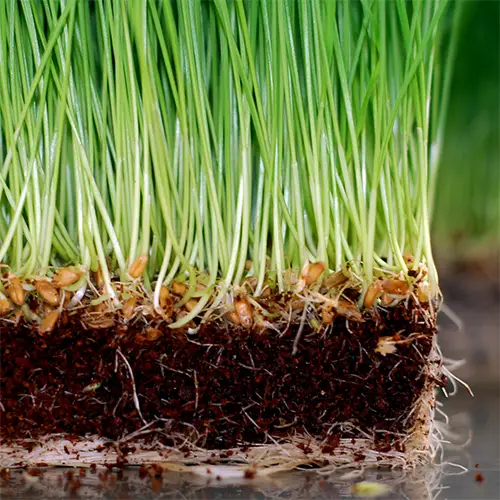
Remember, each plant variety may have slightly different requirements, so ensure you read and follow the specific instructions provided with your seeds. With proper care and attention to detail, your seeds will sprout and thrive in the coco coir, setting the stage for a successful hydroponic garden. Stay tuned for the next steps in our guide to seedling propagation in coco coir.
– Select your seeds: Choose high-quality seeds from reputable sources. Consider the variety, growth characteristics, and desired outcome before making your selection.
– Prepare the coco coir: Moisten the coco coir by adding water gradually until it reaches a consistently damp and crumbly texture. Avoid over-soaking to prevent waterlogging and subsequent issues with seed germination.
– Fill the containers: Use containers specifically designed for seedling propagation, such as seed trays or small pots. Fill them with the dampened coco coir, ensuring they are evenly packed but not compacted.
– Plant the seeds: Follow the packet instructions for seed depth and spacing. Generally, small seeds are lightly pressed into the surface, while larger seeds may require burying. Gently cover the seeds with a thin layer of coco coir.
– Provide adequate moisture: Place the containers in a warm and well-lit area, preferably under grow lights or in a greenhouse. Monitor the moisture levels regularly and mist the surface with water as needed to maintain appropriate humidity.
– Maintain ideal temperature and light conditions: Most seeds require consistent temperatures ranging from 70 to 80°F (21 to 27°C) for successful germination. Adjust lighting to provide 16-18 hours of light per day using full-spectrum LED grow lights if natural sunlight is insufficient.
Remember:
Each plant variety may have slightly different requirements
Ensure you read and follow specific instructions provided with your seeds
With proper care and attention to detail,
Your seeds will sprout and thrive in coco coir
Setting stage for successful hydroponic garden
Stay tuned for next steps in our guide
Providing Adequate Light and Temperature for Seedling Growth in Coco Coir
Ensuring seedling growth in coco coir requires careful attention to providing adequate light and temperature conditions. Light is essential for photosynthesis, the process through which plants convert light energy into chemical energy to fuel their growth. For optimal growth, seedlings should receive 16 to 18 hours of light each day. This can be achieved using artificial lighting systems such as LED or fluorescent grow lights. Positioning the lights 6 to 12 inches above the seedlings helps to provide sufficient light intensity for their development.
In addition to light, maintaining the right temperature is crucial for seedling growth. Most plant species thrive in temperatures ranging from 65 to 75 degrees Fahrenheit (18 to 24 degrees Celsius). However, it is important to research specific temperature preferences for the seeds being propagated. Too high or too low temperatures can hinder germination and growth. Using a thermostat-controlled heat mat beneath the seedling trays can help regulate temperatures and provide a consistent environment for optimal seedling development. Regularly monitoring both light and temperature conditions throughout the seedling stage will ensure healthy growth and facilitate a successful transition into the hydroponic system.
• Seedlings should receive 16 to 18 hours of light each day for optimal growth
• Artificial lighting systems such as LED or fluorescent grow lights can be used to provide sufficient light intensity
• Positioning the lights 6 to 12 inches above the seedlings helps ensure adequate light exposure
• Maintaining the right temperature is crucial for seedling growth, with most plant species thriving in temperatures ranging from 65 to 75 degrees Fahrenheit (18 to 24 degrees Celsius)
• Research specific temperature preferences for the seeds being propagated
• Too high or too low temperatures can hinder germination and growth
• Using a thermostat-controlled heat mat beneath seedling trays can help regulate temperatures and provide a consistent environment for optimal development
• Regularly monitoring both light and temperature conditions throughout the seedling stage is important for healthy growth
• This will facilitate a successful transition into the hydroponic system.
Nutrient Solutions for Coco Coir Seedlings
When it comes to nutrient solutions for coco coir seedlings, it’s important to provide them with the right balance of essential elements for optimal growth and development. Coco coir itself is relatively inert and low in nutrients, which means that seedlings will rely heavily on the nutrient solution provided.
The composition of the nutrient solution will depend on the specific needs of the seedlings. Generally, it should contain macronutrients like nitrogen (N), phosphorus (P), and potassium (K), as well as micronutrients like iron (Fe), manganese (Mn), and zinc (Zn). It’s essential to strike the right balance, as too much or too little of certain nutrients can lead to nutrient deficiencies or toxicity.
When selecting a nutrient solution for coco coir seedlings, gardeners should consider using specialized hydroponic fertilizers that are specifically formulated for seedling growth. These fertilizers are often available in liquid form and can be easily mixed with water to create a solution that can be directly applied to the coco coir medium. Some gardeners prefer to use a two-part nutrient system, where the macronutrients and micronutrients are supplied in separate bottles and can be adjusted as needed.
To ensure the success of coco coir seedlings, it’s also important to regularly monitor the pH level of the nutrient solution. Coco coir has a natural pH range of around 5.5 to 6.8, which is slightly acidic to neutral. Keeping the pH level within this range is crucial for proper nutrient uptake and overall plant health. pH test kits or digital pH meters are essential tools for maintaining the optimal pH levels for coco coir seedlings.
In conclusion, providing the right nutrient solution to coco coir seedlings is crucial for their growth and development. Selecting a specialized hydroponic fertilizer and monitoring the pH levels will help ensure that the seedlings receive the optimal balance of nutrients. With the right care and attention, coco coir seedlings can thrive and become healthy, robust plants in your hydroponic system.
– Coco coir seedlings rely heavily on the nutrient solution provided due to coco coir’s low nutrient content.
– The nutrient solution should contain macronutrients like nitrogen, phosphorus, and potassium, as well as micronutrients like iron, manganese, and zinc.
– Specialized hydroponic fertilizers formulated for seedling growth are recommended for coco coir seedlings.
– Liquid fertilizers that can be easily mixed with water are commonly used for coco coir seedlings.
– Some gardeners prefer using a two-part nutrient system to adjust the macronutrient and micronutrient levels as needed.
– Regular monitoring of the pH level of the nutrient solution is crucial for proper nutrient uptake by coco coir seedlings.
– Maintaining a pH range of 5.5 to 6.8 is important for optimal plant health in coco coir seedlings.
– pH test kits or digital pH meters are essential tools for maintaining the ideal pH levels in the nutrient solution.
Overall, providing a balanced and specialized nutrient solution along with careful attention to pH levels will ensure healthy growth and development of coco coir seedlings in a hydroponic system.
Watering Coco Coir Seedlings: Best Practices
Watering coco coir seedlings properly is crucial for their healthy development and growth. Coco coir is a unique medium that has excellent water retention capabilities, allowing for efficient root hydration. One of the best practices for watering coco coir seedlings is to ensure even moisture distribution throughout the medium.
To achieve this, it is recommended to water coco coir seedlings from the bottom rather than the top. This method allows the roots to absorb water as needed, preventing the risk of overwatering and reducing the likelihood of water-related diseases. Placing the containers in a tray filled with water allows the coco coir to absorb moisture gradually, ensuring that the roots have access to water without excess saturation. It is important to monitor the moisture levels regularly and avoid letting the coco coir completely dry out or become waterlogged.
Additionally, adjusting the watering frequency based on the growth stage of the seedlings is crucial. During the initial stages, when the seedlings are establishing their root systems, it is essential to water them more frequently to promote root development. As the seedlings mature, the watering frequency can be gradually reduced, allowing the roots to develop a more robust system that can efficiently absorb water and nutrients.
In summary, watering coco coir seedlings from the bottom and adjusting the watering frequency as per the growth stage are best practices to ensure healthy and thriving plants. By following these guidelines, gardening enthusiasts can provide optimal hydration to their seedlings, setting a solid foundation for successful hydroponic cultivation.
• Water coco coir seedlings from the bottom to ensure even moisture distribution throughout the medium.
• Use a tray filled with water to allow gradual absorption of moisture by the coco coir.
• Regularly monitor moisture levels and avoid letting the coco coir completely dry out or become waterlogged.
• Adjust watering frequency based on the growth stage of the seedlings.
• Water more frequently during initial stages to promote root development.
• Gradually reduce watering frequency as seedlings mature to encourage robust root systems that can efficiently absorb water and nutrients.
Learn more about coco coir in hydroponics by watching this video.
Monitoring and Adjusting pH Levels in Coco Coir
Monitoring and adjusting pH levels in coco coir is essential for successful seedling propagation in hydroponics. The pH, or potential of hydrogen, refers to the acidity or alkalinity of a solution, and ensuring it is within the optimal range is crucial for nutrient absorption and overall plant health.
To monitor pH levels in coco coir, it is recommended to use a pH meter or pH test strips. These tools allow precise measurement of the pH, providing valuable information about the coco coir’s acidity or alkalinity. By regularly testing the pH, you can identify any deviations from the optimal range and take appropriate corrective actions.
Adjusting pH levels in coco coir can be done by using pH adjustment solutions or additives. If the pH is too high (alkaline), you can lower it by adding an acid solution, such as phosphoric acid. Conversely, if the pH is too low (acidic), you can raise it by using a base solution, like potassium hydroxide. It is important to make gradual adjustments and retest the pH after each addition to avoid overcompensation or extreme fluctuations.
Maintaining the pH within the optimal range for your specific plants is crucial for nutrient uptake and overall growth. Different plant species have varying pH preferences, so it is essential to research the ideal pH range for the crops you are cultivating. Remember to regularly monitor and adjust the pH levels in coco coir to create the best environment for your seedlings’ development.
• Monitoring and adjusting pH levels in coco coir is crucial for successful seedling propagation in hydroponics.
• pH refers to the acidity or alkalinity of a solution, and maintaining it within the optimal range is essential for nutrient absorption and plant health.
• Using a pH meter or pH test strips allows precise measurement of the coco coir’s acidity or alkalinity, providing valuable information for monitoring purposes.
• Regularly testing the pH helps identify any deviations from the optimal range, allowing appropriate corrective actions to be taken.
• Adjusting pH levels in coco coir can be done by using pH adjustment solutions or additives.
• If the pH is too high (alkaline), it can be lowered by adding an acid solution like phosphoric acid.
• Conversely, if the pH is too low (acidic), it can be raised using a base solution such as potassium hydroxide.
• It’s important to make gradual adjustments and retest the pH after each addition to avoid overcompensation or extreme fluctuations.
• Maintaining the proper pH range specific to your plants’ preferences is crucial for nutrient uptake and overall growth.
• Different plant species have varying ideal pH ranges, so research is necessary to determine what works best for your crops.
• Regularly monitoring and adjusting the pH levels in coco coir creates an optimal environment for seedlings’ development.
Preventing Common Seedling Issues in Coco Coir
When it comes to seedling propagation in coco coir, there are a few common issues that can arise. By taking proactive measures to prevent these issues, you can ensure the successful growth and development of your seedlings.
One common issue is overwatering, which can lead to root rot and stunted growth. It is important to remember that coco coir retains moisture well, so it is crucial to provide adequate drainage to prevent waterlogged conditions. Use containers with drainage holes and monitor the moisture levels regularly to avoid overwatering.
Another issue is nutrient imbalances, which can result in nutrient deficiencies or toxicities. Coco coir is an inert medium, meaning it does not provide any nutrients to the plants. Therefore, it is essential to provide a balanced nutrient solution specifically formulated for hydroponic use. Regularly monitor the nutrient levels and pH of the solution to ensure that your seedlings are receiving the proper nutrition for optimal growth.
By being mindful of these common issues and taking the necessary precautions, you can set your coco coir seedlings up for success. With proper watering and nutrient management, you can ensure healthy and vigorous growth, setting the stage for a bountiful harvest.
• Overwatering can lead to root rot and stunted growth
• Provide adequate drainage to prevent waterlogged conditions
• Use containers with drainage holes
• Monitor moisture levels regularly to avoid overwatering
• Nutrient imbalances can result in deficiencies or toxicities
• Coco coir is an inert medium, it does not provide nutrients
• Use a balanced nutrient solution formulated for hydroponic use
• Regularly monitor nutrient levels and pH of the solution
By being mindful of these common issues and taking the necessary precautions, you can set your coco coir seedlings up for success. With proper watering and nutrient management, you can ensure healthy and vigorous growth, setting the stage for a bountiful harvest.
There can be various types of issues in coco coir. Here is a table that summarizes the information:
| Issue | Description |
|---|---|
| Nutrient Deficiencies | Coco coir is a low-nutrient medium, which means that growers must supplement with fertilizers to provide seedlings with the necessary nutrients. Malnourished seedlings will have a weaker root system, so either transplant seedlings using a different potting soil mix or apply a balanced fertilizer at the cotyledon stage to boost seedling health. |
| pH Imbalances | The pH level of coco coir can vary depending on the source and preparation method. If the pH is too high or too low, it can cause nutrient deficiencies and other problems. It’s important to monitor the pH level of the coco coir and adjust it as needed. |
| Pest Management | Like any growing medium, coco coir can attract pests such as fungus gnats, spider mites, or thrips. It’s important to take preventive measures such as using sterile coco coir, avoiding overwatering, and keeping the growing area clean. |
Transplanting Coco Coir Seedlings into Hydroponic Systems
Transplanting coco coir seedlings into hydroponic systems is a crucial step in ensuring the continued growth and development of your plants. When the seedlings have established a strong root system in the coco coir medium, it is time to carefully transfer them into the hydroponic system for optimal nutrient uptake.
Before transplanting, it is essential to thoroughly wash and sterilize all the hydroponic equipment to prevent the introduction of any harmful pathogens. This includes the containers, net pots, and any other components that will come into contact with the coco coir seedlings. Sterilization can be achieved by using a mild bleach solution or hydrogen peroxide, ensuring a clean and disease-free environment for your plants. Additionally, it is advisable to rinse the coco coir itself with water to remove any excess salts or impurities that may hinder plant growth. By taking these precautions, you can provide an ideal setting for the successful transition of your seedlings into the hydroponic system.
• Thoroughly wash and sterilize all hydroponic equipment before transplanting
• Use a mild bleach solution or hydrogen peroxide for sterilization
• Rinse coco coir with water to remove excess salts and impurities
• Create a clean and disease-free environment for the seedlings’ transition into the hydroponic system
Troubleshooting Coco Coir Seedling Propagation Problems
To troubleshoot any problems that may arise during coco coir seedling propagation, it is essential to have a thorough understanding of the common issues and their potential solutions. One of the most common problems encountered is over or underwatering the seedlings. Coco coir has excellent water retention capabilities, but it can also become waterlogged, leading to root rot and other complications. On the other hand, insufficient watering can cause the seedlings to wilt and dry out.
To address this issue, it is crucial to establish a regular watering schedule and monitor the moisture levels in the coco coir. Ensuring proper drainage is also essential to prevent waterlogging. Additionally, using a moisture meter can help maintain accurate moisture levels and prevent over or underwatering.
Another common challenge in coco coir seedling propagation is nutrient deficiency or imbalance. Coco coir, although rich in potassium and calcium, is relatively inert and lacks the necessary nutrients for seedling growth. This can result in stunted or unhealthy plants.
To overcome this problem, it is important to provide the seedlings with a balanced nutrient solution specifically formulated for hydroponics. Using a nutrient solution designed for seedlings can ensure they receive the necessary macro and micronutrients required for healthy growth. Regular monitoring of nutrient levels and adjustments as needed will also help prevent nutrient imbalances.
By understanding and addressing these common coco coir seedling propagation problems, gardeners can maximize their success and overcome potential setbacks. By implementing proper watering techniques and providing adequate nutrition, seedlings can thrive in coco coir, leading to healthy and robust plants in their hydroponic systems.
• Over or underwatering the seedlings is a common problem in coco coir seedling propagation.
• Coco coir can become waterlogged, leading to root rot and other complications.
• Insufficient watering can cause the seedlings to wilt and dry out.
• Establishing a regular watering schedule and monitoring moisture levels is crucial.
• Ensuring proper drainage is essential to prevent waterlogging.
• Using a moisture meter can help maintain accurate moisture levels.
• Nutrient deficiency or imbalance is another common challenge in coco coir seedling propagation.
• Coco coir lacks necessary nutrients for seedling growth, resulting in stunted or unhealthy plants.
• Providing balanced nutrient solutions specifically formulated for hydroponics is important.
• Using nutrient solutions designed for seedlings ensures they receive necessary macro and micronutrients.
• Regular monitoring of nutrient levels and adjustments as needed will prevent imbalances.
Here is a table that shows what can be the problem and their solution:
| Problem | Cause | Solution |
|---|---|---|
| Seedlings not germinating | Coco coir too dry | Water the coco coir more frequently |
| Seedlings not germinating | Coco coir too wet | Allow the coco coir to dry out slightly between watering sessions |
| Seedlings not germinating | Coco coir too compact | Sift the coir mixture through a mesh screen to remove any large particles |
| Seedlings leggy and malnourished | Coco coir too old | Use fresh coco coir |
| Seedlings leggy and malnourished | Coco coir too dry | Water the seedlings more frequently |
| Seedlings leggy and malnourished | Coco coir too wet | Allow the coco coir to dry out slightly between watering sessions |
| Seedlings leggy and malnourished | Coco coir too compact | Sift the coir mixture through a mesh screen to remove any large particles |
| Seedlings yellowing | Nutrient deficiency | Apply a balanced fertilizer at the cotyledon stage |
| Seedlings yellowing | pH imbalance | Adjust the pH levels of the coco coir |
| Seedlings yellowing | Overwatering | Allow the coco coir to dry out slightly between watering sessions |
| Seedlings stunted growth | Overwatering | Allow the coco coir to dry out slightly between watering sessions |
| Seedlings stunted growth | Coco coir too wet | Allow the coco coir to dry out slightly between watering sessions |
| Seedlings stunted growth | Nutrient deficiency | Apply a balanced fertilizer |
| Seedlings stunted growth | pH imbalance | Adjust the pH levels of the coco coir |
Harvesting and Utilizing Coco Coir: Sustainable Practices
Coco coir is not only a versatile and effective growing medium for hydroponics, but it is also a sustainable and eco-friendly option for gardening enthusiasts. Harvesting and utilizing coco coir is a crucial step in promoting sustainable practices in gardening.
To harvest coco coir, the outer husk of the coconut is removed and the inner fibers are extracted. This process is done manually or mechanically, ensuring minimal impact on the environment. The extracted fibers are then processed and dried, resulting in the ready-to-use coco coir that is popular among gardeners.
One of the key benefits of utilizing coco coir is its renewable nature. Unlike peat moss, which is a non-renewable resource, coco coir can be continuously harvested without depleting its source. This makes it a more sustainable choice for gardeners looking to reduce their ecological footprint. Additionally, coco coir is biodegradable, meaning it will naturally decompose over time without causing harm to the environment.
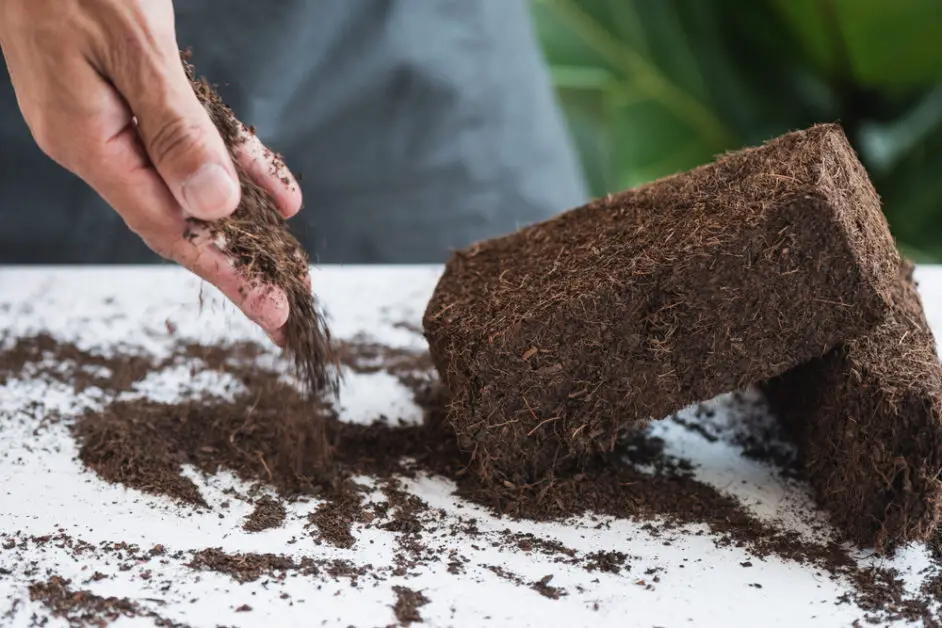
Furthermore, the water retention properties of coco coir contribute to water conservation. Coco coir has excellent moisture-holding capacity, which reduces the need for frequent watering in gardening. This not only conserves water but also minimizes the risk of over-watering, which can be detrimental to plant health.
In conclusion, harvesting and utilizing coco coir presents gardening enthusiasts with a sustainable alternative to traditional growing mediums. Its renewable nature, biodegradability, and water-conserving properties make it an excellent choice for those looking to mitigate their impact on the environment. By incorporating coco coir into their gardening practices, individuals can contribute to the promotion of sustainable and environmentally-friendly horticulture.
• Coco coir is a versatile and effective growing medium for hydroponics
• Harvesting coco coir involves removing the outer husk of the coconut and extracting the inner fibers
• This process can be done manually or mechanically with minimal impact on the environment
• The extracted fibers are processed and dried to create ready-to-use coco coir
• Unlike peat moss, coco coir is a renewable resource that can be continuously harvested without depleting its source
• Coco coir is biodegradable, meaning it will naturally decompose over time without causing harm to the environment
• Coco coir has excellent moisture-holding capacity, reducing the need for frequent watering in gardening
• This conserves water and minimizes the risk of over-watering, which can be detrimental to plant health
Success Stories: Real-life Experiences with Coco Coir Seedling Propagation
Success Stories: Real-life Experiences with Coco Coir Seedling Propagation
One gardening enthusiast, Sarah Thompson, shared her success story with using coco coir for seedling propagation. She mentioned that coco coir provided an excellent medium for her seedlings, promoting healthy root development and overall plant growth. Sarah highlighted that the high water-holding capacity of coco coir helped maintain optimal moisture levels for the seeds, reducing the risk of over or under-watering.
Another success story comes from John Rodriguez, a hydroponics hobbyist who has had great results with coco coir seedling propagation. He found that the coco coir medium provided excellent aeration, ensuring the roots had ample oxygen for growth. John also emphasized the convenience of coco coir, as it came in compressed blocks that expanded when soaked in water, making it easy to use and store. He mentioned that the pH-neutral nature of coco coir required minimal adjustments, saving him time and effort in maintaining the proper pH levels for seedling growth.
These success stories demonstrate the positive experiences that gardeners and hydroponics enthusiasts have had with utilizing coco coir for seedling propagation. Their stories align with the various benefits of coco coir, such as its water-holding capacity, aeration properties, and pH neutrality. If you’re considering starting your own seedlings using coco coir, these success stories provide encouraging evidence that coco coir can be a reliable and effective medium for healthy and robust plants.
• Sarah Thompson found that coco coir promoted healthy root development and overall plant growth.
• Coco coir’s high water-holding capacity helped maintain optimal moisture levels for the seeds, reducing the risk of over or under-watering.
• John Rodriguez experienced excellent results with coco coir seedling propagation in his hydroponics setup.
• The aeration properties of coco coir ensured ample oxygen supply to the roots for growth.
• Coco coir’s compressed blocks made it convenient to use and store, expanding when soaked in water.
• The pH-neutral nature of coco coir required minimal adjustments, saving time and effort in maintaining proper pH levels for seedling growth.
Expanding
It is no secret that the use of coco coir in hydroponic systems has gained immense popularity among gardening enthusiasts in recent years. With its numerous benefits and versatility, coco coir is quickly becoming a go-to choice for many growers. But why stop at seedling propagation? There is a whole world of possibilities when it comes to utilizing coco coir in different stages of plant growth.
Expanding your hydroponic endeavors to include coco coir in various aspects of your gardening can greatly enhance the overall success of your plants. From transplanting seedlings into larger hydroponic systems to utilizing coco coir as a sustainable medium for harvest, the possibilities are endless. With its excellent moisture retention and aeration properties, coco coir provides an ideal environment for roots to thrive and plants to flourish. By exploring the different stages of plant growth where coco coir can be utilized, you can take your hydroponic gardening to new heights.
So, if you’re ready to explore the various ways in which coco coir can benefit your hydroponic setup, join us as we delve into the exciting world of expanding the use of coco coir in plant growth. From providing the proper moisture levels during seedling propagation to troubleshooting common issues, we’ll guide you through each step, ensuring you have the knowledge and tools necessary to succeed. Get ready to witness the remarkable results that can be achieved by harnessing the power of coco coir in your hydroponic endeavors.
• Coco coir is gaining popularity among gardening enthusiasts for its benefits and versatility in hydroponic systems.
• Expanding the use of coco coir in different stages of plant growth can greatly enhance overall success.
• Coco coir provides an ideal environment for roots to thrive and plants to flourish with its moisture retention and aeration properties.
• Transplanting seedlings into larger hydroponic systems using coco coir can promote healthy growth.
• Utilizing coco coir as a sustainable medium for harvest allows for efficient nutrient absorption by plants.
• Exploring the various ways coco coir can benefit your hydroponic setup will take your gardening to new heights.
What are the benefits of using Coco Coir in hydroponics?
Coco Coir offers excellent water retention, good air porosity, and is a sustainable alternative to peat moss. It also has a neutral pH and is resistant to diseases and pests.
How do I choose the right Coco Coir for seedling propagation?
Look for Coco Coir that is specifically labeled for seedling propagation. It should have a fine texture and be free from any contaminants or additives.
How do I prepare Coco Coir for seedling propagation?
To prepare Coco Coir, soak it in water overnight. Then, squeeze out any excess water and fluff it up to ensure it has a light and airy texture.
What are the ideal containers for Coco Coir seedling propagation?
Use small pots or trays with drainage holes to allow excess water to drain out. This helps prevent waterlogging and promotes healthy root growth.
How do I sterilize Coco Coir to prevent diseases?
Sterilize Coco Coir by baking it in the oven at 180°F (82°C) for about 30 minutes. This helps kill any potential pathogens or pests that may be present.
How do I soak Coco Coir for proper moisture levels?
Soak Coco Coir in water until it is fully saturated. Then, squeeze out the excess water to achieve the ideal moisture levels for seedling growth.
Can you provide a step-by-step guide on planting seeds in Coco Coir?
Yes, please refer to the article section titled “Planting Seeds in Coco Coir: Step-by-Step Guide” for a detailed step-by-step guide.
What light and temperature conditions are best for seedling growth in Coco Coir?
Seedlings grown in Coco Coir generally require 14-16 hours of light per day and a temperature range between 70-80°F (21-27°C) for optimal growth.
What nutrient solutions should I use for Coco Coir seedlings?
Use a balanced hydroponic nutrient solution specifically formulated for seedling growth. Follow the manufacturer’s instructions for proper dilution and application.
What are the best practices for watering Coco Coir seedlings?
Water Coco Coir seedlings when the top inch of the medium feels dry. Avoid overwatering and ensure proper drainage to prevent waterlogged roots.
How do I monitor and adjust pH levels in Coco Coir?
Use a pH meter or pH test strips to monitor the pH of the nutrient solution. Adjust the pH using pH-up or pH-down solutions to maintain a range of 5.5-6.5.
How can I prevent common seedling issues in Coco Coir?
Ensure proper ventilation, avoid overwatering, maintain optimal temperature and humidity levels, and regularly monitor for pests or diseases to prevent common seedling issues.
How do I transplant Coco Coir seedlings into hydroponic systems?
Gently remove the seedlings from the Coco Coir and transplant them into net pots or other suitable containers filled with a hydroponic growing medium. Place them in the hydroponic system, ensuring their roots are submerged in the nutrient solution.
How can I troubleshoot Coco Coir seedling propagation problems?
Please refer to the article section titled “Troubleshooting Coco Coir Seedling Propagation Problems” for a comprehensive guide on identifying and addressing common issues.
Are there any sustainable practices for harvesting and utilizing Coco Coir?
Yes, Coco Coir can be reused by composting it or incorporating it into garden soil to improve its structure and water-holding capacity. Recycling and repurposing Coco Coir contribute to sustainable gardening practices.
Are there any success stories or real-life experiences with Coco Coir seedling propagation?
Yes, please refer to the article section titled “Success Stories: Real-life Experiences with Coco Coir Seedling Propagation” to read about real-life experiences and the positive outcomes of using Coco Coir.

